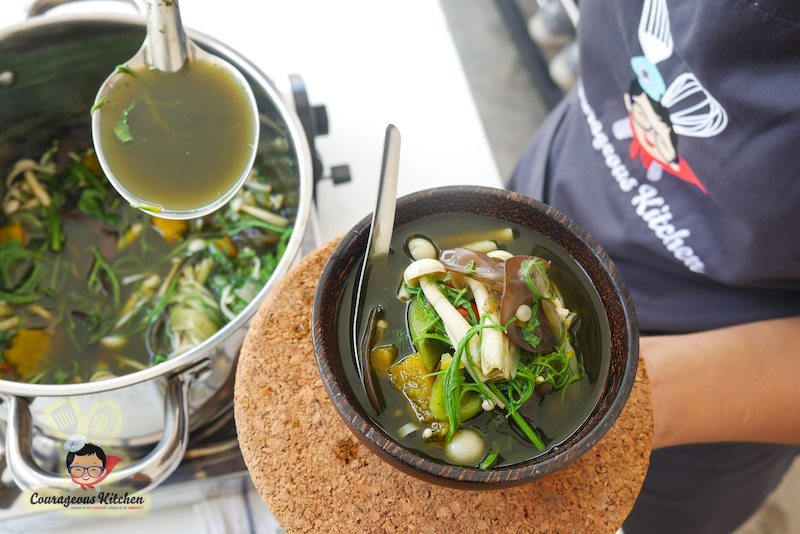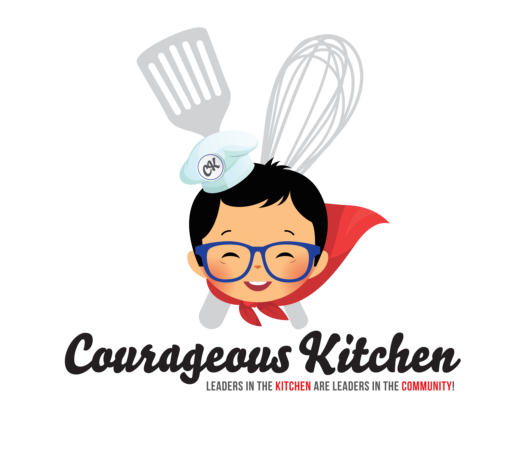Today’s shared plate is a piping hot bowl of mushroom soup known by locals as ‘gaeng hed‘. The soup’s popularity pales in comparison to Thai cuisine’s soup juggernauts such as tom yam, and tom kha soups. However, despite not having as strong a reputation, we believe this enchanting green soup too, will leave newcomers craving a second taste.
The soup isn’t only great tasting, with a sneakily slow and building brand of spiciness, but gaeng hed is also good for you. Contrary to popular belief, the soup base isn’t tinted green from the mix of herbs and mushrooms added, but is given its color by blending together ‘yanang‘ leaves (ใบย่านาง).
Unfortunately, there isn’t a great name for yanang in English. The scientific name is tiliacora triandra, and it’s popular with older folks in the countryside, especially the area called ‘issan‘ that borders Laos. Wise in their years, they will often drink the grassy tasting herb as a juice, to most quickly benefit from yanang’s anti-inflamatory, anti-cancer, and pain relieving properties.
When you factor in the benefits from the fresh acacia herb (cha om or ใบชะอม), sweet Thai pumpkin, and a flurry of mushrooms, you’d be hard pressed to find a healthier Thai soup. The health benefits from the acacia alone, a common ingredient in gaeng hed, include antioxidant properties, a source of vitamin A, and helping to regulate body temperature.
These amazing herbal properties and their Lao-issan origin, made the dish our choice to cook for US Embassy guests, including Dr. Joanne Hyppolite, curator of the National Museum of African American History and Culture (NMAAHC). Both the dish, and the often appropriated Lao-issan cuisine in general share some commonalities, and ingredients with African American soul food. This ranges from the darker skin, socio-economically disadvantaged people of the region, to gaeng hed’s culinary versatility allowing it to be easily supplemented with herbs and vegetables you may have on hand.
Most interestingly is the texture of the soup. Named as a ‘gaeng’ in Thai, which implies a curry or curry-like, thick consistency, however, this is a bit of a misnomer. Instead gaeng hed is eaten as more of a thickened soup, with many recipes calling for the addition of tapioca starch. The starch, used similarly to how many people use corn starch, gives the soup a consistency that is similar in mouthfeel to the natural thickener of African American cooks in generations past, okra.
Although not commonly included in this soup, Thais too love their okra. The young soft okra (aka ladyfingers, kra jiap, or กระเจี๊ยบ) fruits are steamed or eaten raw as an accompaniment to traditional Thai chili pastes. Fortunately, Courageous Kitchen has 3 six-foot okra trees which produce fruit every 2-3 days. This made it easy to grab a few from the garden and quickly slice them for our guests from the US Embassy.

Gaeng hed may be a little known dish outside of Thailand, but it certainly brought two seemingly disparate food histories together at Courageous Kitchen recently. We’re all about using food to start discussions, break down barriers between people, and heal ourselves. We hope you’ll be intrigued to find out more about this healing soup and the spice and herbs that make it special. Happy eating, please share this plate with someone!
If you’re curious about Thai food, especially any of the ingredients mentioned in this article, be sure to let us know to include them in your cooking class or street food tour with us in Bangkok.
Photo credit: Alisara Chirapongse






